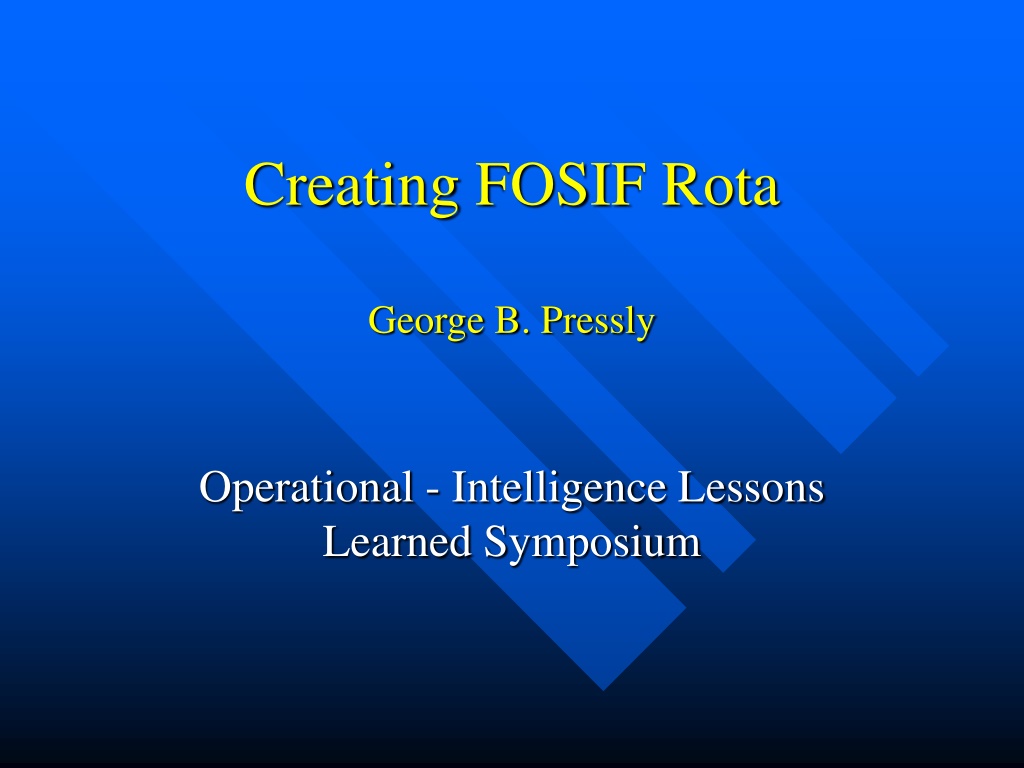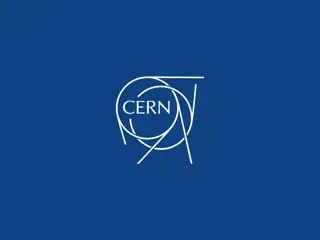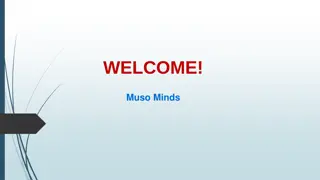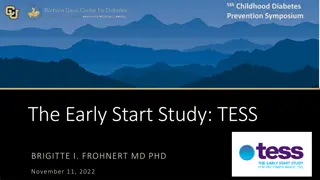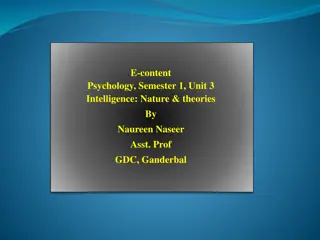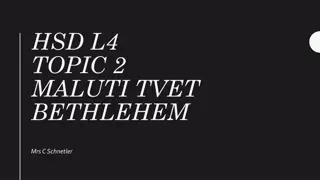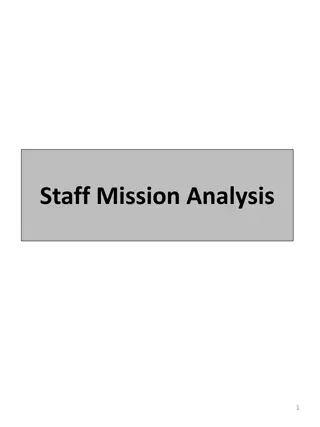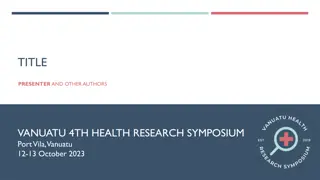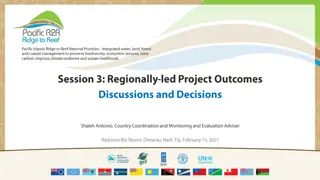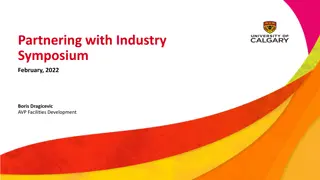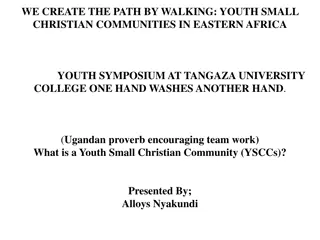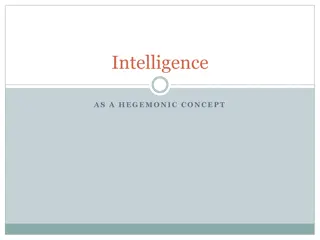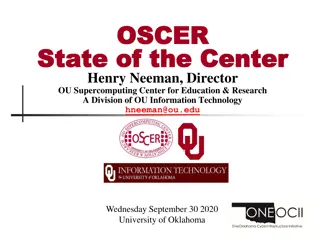Lessons Learned from Establishing FOSIF Rota in Operational Intelligence Symposium
The process of establishing and operating FOSIF Rota in April 1970, supporting SIXTHFLT OPCON, involved handling perishable information from various sources efficiently. Major sources included SIXTHFLT units with varying intel capabilities. Success was attributed to meeting real needs, strong support from commanders, dynamic communications, flexibility in missions, credibility with operators, and authorization for SI sanitation. Initial ground rules set boundaries and emphasized support to SIXTHFLT, focusing on Soviet Navy and special interest ships. Resources included a 1000 sq ft SSO vault in FWC Rota with good communications infrastructure.
Download Presentation

Please find below an Image/Link to download the presentation.
The content on the website is provided AS IS for your information and personal use only. It may not be sold, licensed, or shared on other websites without obtaining consent from the author. Download presentation by click this link. If you encounter any issues during the download, it is possible that the publisher has removed the file from their server.
E N D
Presentation Transcript
Creating FOSIF Rota George B. Pressly Operational - Intelligence Lessons Learned Symposium
Establishing and operating FOSIF Rota, and all that implied April 1970 First OSIS element Initiated by DNI Support to SIXTHFLT OPCON of CINCUSNAVEUR
The Problem Get highly perishable information from many sources, widely scattered geogrpahically Process it in a timely manner And disseminate in a form and in time to be operationally useful
SIXTHFLT Units Had Varying Intelligence Capabilities SI access and intel staff COMSIXTHFLT CTF 60 / CTG 60.1 and carriers CTF 67 / CTF 69 / CTF 61 / 62 VQ and some specops units No SI access Most ships - destroyers, submarines, amphibs, oilers and other support ships Patrol Squadrons
The Key Ingredients to Success A real need Strong, articulated support of operational commanders: COMSIXTHFLT and CINCUSNAVEUR Excellent and dynamic communications capability Flexibility in accomplishing mission Establishing credibility with operators Authorization to sanitize SI
Our Initial Ground Rules to Bound the Problem Who? Where? When? Doing what? With whom? 72 hour time frame - yesterday, today, tomorrow Focus on support to SIXTHFLT Soviet Navy and special interest merships initially, other merchant shipping and other Med navies to follow Emphasize genser and sanitization No automation
Initial Resources 1000 square foot SSO vault in FWC Rota Good communications Personnel
Good Communications from Beginning Autodin and SPINTCOM access for record genser and SI traffic Participant in ASWFORSIXTHFLT net and SPARCOM (VQ) net Circuits to carriers and COMSIXTHFLT CSOC (later NSOC) opscom circuit OPSCOM circuit to NAVSECGRU Rota P&R with torn tape relay to other NSG sites OPSCOM circuits to Nosic, FOSIC London (when established and to to CINCEUR
Downside of Communications We agreed to take the 5 FWC radiomen, and be responsible for all FWC/FOSIF comms Tough comms job - Both of us sent and received much high precedence traffic FWC was originator of two fleet broadcast channels which we ran
Personnel Manned initially by rotating TAD and reserves - lots of OJT Billet structure from a proposed Med Exercise Analysis Group Six months to full permanent manning Mostly inexperienced but willing
Information Sources and how received How processed How disseminated
Some Sources and How Received Via record communications (genser and SI) HFDF reports (NCO MED/NORA) Sigint spot reports and summaries (field stations and NSA) Sightings (SIXTHFLT, NATO commands, and friendly navies) LANTFLT units, including COSL Straits coverage reports Via opscom circuits Sightings and operational data from SIXTHFLT units Tips from NSG Rota, NSA, AFSS Crete, Athens and San Vito , NSG Todendorf, Bremerhaven, Edzel, Cyprus, Brits Recce monitoring from NSA
One Important Early Decision We would live with one teletype copy of each incoming message given to our watch officer No queue nor time lost in retyping, duplication, etc. This resulted in minimum internal handling time
Processing 24 hour watch structure Who? Where? When? Doing what? With whom? Looked at Soviet Naval activity in context of SIXTHFLT operations and littoral political and military activity
24 Hour Watch Structure Manually plotted all positions and tracks - Soviet and USN Recorded positions and C3 indicators on daily status sheets Sought additional scenario indicators Monitored all traffic for high interest items to pass along or call to fleet attention Monitored SI circuits during high traffic periods
Who? Where? When? Surface ships - lots of information, lots of time Aircraft - information fragments, little time Submarines - little information
Doing what? With whom? C3 analysis Look at all Soviet platforms and their C3 relationships Where are SIXTHFLT units? What else is going on politically? Militarily?
Shore Facility Black Sea Fleet AF Badgers/Backfires Carrier Tattletale Kynda/Kresta DD/DDG SSGN CLGM C/E-II DDG The Basic C3 Scenario
Dissemination Via both record comms (SI and genser) and opscom Timely Get the 0500Z report to carriers in time for morning briefing Air and other time sensitive advisories flash precedence Torn tape relay during some specops Briefings for inchopping units Occasionally called upon to relay operational traffic
Coordination with other shore and afloat commands and intelligence activities in and external to the Med area
Relationships with NSA Excellent at analyst level (Lew Miller) Unique and operationally significant insights from cooperative efforts Strained at policy level until CSG established - Tech info issues primarily Dick Lord visit Milt Zaslow visit Don Harvey at NFOIO frequently had to oil the NSA waters during early days
FICEUR Emory Sourbeer s advice, counsel and personal support Foxtrot PI keys Quick response for other PI and intelligence support
VQ-2 Good relationships with both operational and intelligence sides CSG made significant contributions to VQ mission success May hunts Pre-mission and in flight support and tips
PATRON Rota Deployed half squadron of P-3 s; remainder in Lajes They were hungry to find Soviet nuclear subs We convinced them we could help Some notable ASW successes from informal coordination
NCO MED/NORA CINCUSNAVEUR authorized tasking authority Feedback regarding HFDF accuracy Very interactive once we moved to NAVSECGRU Building in 1972
CTF 69 Support to sub ops Became our most interactive customer Exploited C3 indicators as major inputs to operations
COMASWFORSIXTHFLT (CTF 67) Relationship had ups and downs Usually worked well when focused on intelligence and intelligence support Sometimes went astray when surveillance and reconnaissance were the subject LCDR W. Studeman an important and strong initial supporter and contributor
What did the establishment and experiences of FOSIF Rota teach the Navy as it set up other OSIS nodes?
Value of excellent communications
Value of near real time analysis of Soviet activity and C3, in context of USN activity
Value of detailed analysis of Soviet C3 - this became a recognized methodology within OSIS
Application of things learned from in depth analysis to current OpIntel support Pat Curley s ACW work at NFOIO Lew Miller s research at NSA
Value of integrated CSG/FOSIF effort in exploiting C3
Value of all sources of intelligence, some pretty mundane, when analyzed systematically and in detail - Foxtrot PI Keys
Relationship with NAVSECGRU at Rota Initially we were viewed as competitor, or worse CSG, when established, took over most of interface Good once we collocated in NSG building two years later
Coordination with other OSIS nodes once they were online NOSIC Became our merchant shipping expertise and data base Served as our advocate, liaison, (and gopher) in Washington intelligence community Provided them with operational info as well as our reports Provided them SI info from CSG FOSIC London We tended to support them for Med area Asked a lot of questions
View of FOSIF Rota and rest of the OSIS Network from the perspective of CO, NFOIO, including an account of FOSIF Rota s relations with higher echelons in Washington as a devolved theater-level locus for a previously more centralized OpIntel system.
CO NFOIO Responsible for NOSIC Incorporated many of the FOSIF lessons and experience in NOSIC, though much of this had already been started SAG and SAG approach to all source analysis with high national priority requirements and near real time data Emphasis on Soviet C3 analysis
Responsible for NOSIC (cont) NOSIC analysts resident in Pentagon s NMIC with circuit to NOSIC for OpIntel support to JCS Direct support to White House Situation Room Merchant shipping support to OTHT
CO NFOIO Participation in OP-95 Ocean Surveillance Master Plan development At least they did not totally reinvent the wheel. Participation in Defense Science Board Task Force on Naval Counter C3 Many of the C3 indicators that we had discovered and used for analysis now became potential targets for countermeasures
Anecdotal comments Straits ASW ops SSN-3 missile firing Badger/May hunts Comms relay - armed recce ops and others ACW warning Moroccan tanks
Transition of Opintel Thru mid 70 s Systemitized collection, processing and dissemination of avaliable information Focus on warning and more efficient survelllance Mid 70 s brought new sensors, new requirements and new opportunities SELOR and other national sensors Over the horizon targeting requirements Explosion in information technology
